Install the app
How to install the app on iOS
Follow along with the video below to see how to install our site as a web app on your home screen.
Note: This feature may not be available in some browsers.
You are using an out of date browser. It may not display this or other websites correctly.
You should upgrade or use an alternative browser.
You should upgrade or use an alternative browser.
Japan
- Thread starter connyxy
- Start date
duskeyduskey
電車
223系0番台 


Railshuttle
Member
Hey happy new year to everyone.
Question. How do I take pics in trainz 19?
I donwloaded Kurotricks Hawana line but it's missing 4 kuids that are unknown. Anybody know where I can get them?
Question. How do I take pics in trainz 19?
I donwloaded Kurotricks Hawana line but it's missing 4 kuids that are unknown. Anybody know where I can get them?
Happy New Year from Foggy Northern Italy!
Here's my last (or first, depending on your time zone) model of the year 2021: TRTA and Tokyo Metro's stylish 06 and 07 Serieses!
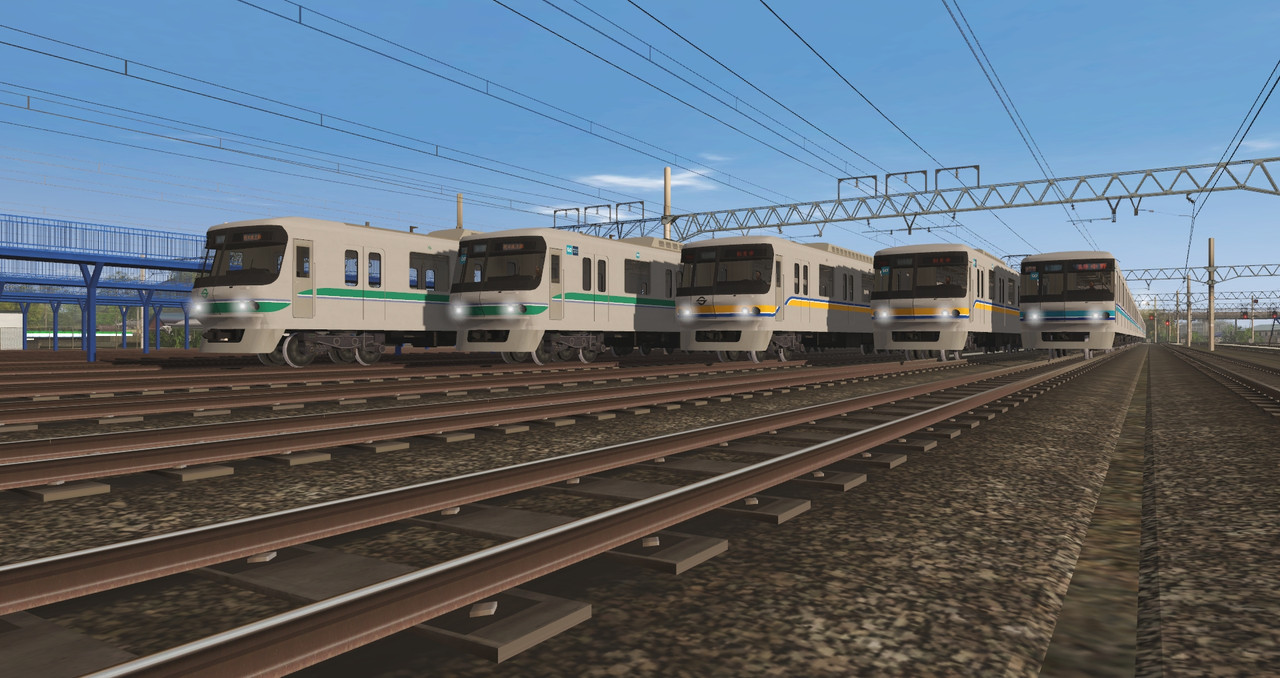
From left to right: The 06 Series (Chiyoda Line) in both TRTA (1993-2004) and Tokyo Metro (2004-2015) versions and the 07 Series in the TRTA (Yurakucho Line, 1993-2004) and Tokyo Metro (Yurakucho Line, 2004-2008 and Tozai Line, 2007 to today) versions.
The pack is already avaible on my website, here.
Both the 06 and 07 Serieses were introduced in the early 1990s in order to increase capacity on two lines opened roughly twenty years earlier, the Chiyoda Line of 1971 and the Yurakucho Line of 1974, especially the latter, wich depsite having reached it's current lenght in 1988 with the extension to Shin-Kiba, was in need for new trains to operate the soon-to-open trough-services with the Seibu Ikebukuro Line, via the "Yurakucho New Line" (wich will become the Fukutoshin Line in 2008).
Depsite the rolling stock of both lines, the 6000 and 7000 Serieses, was still fairly modern for the early 1990s, TRTA opted not to contine their production (the last trains of both series had been delivered only a few years earlier - in 1990 and 1989 respectively), as their basic design was now 20 years old, and in some aspects even relatively outdated. Instead, the company decided to introduce an entirely new train for both lines.
Classified as "06 Series" for the Chiyoda Line and "07 Series" for the Yurakucho Line, they were manufactured by Kawasaki Heavy Industries in 1992, with both serieses entering in service on their respective lines on the 18th of March 1993.
The pleasant apperance of these new trains, with their 14° angled curved front and the round headlights, perhaps their most distinctive fetaure, was the result of a well tought-out design effort encompassing nearly all aspects of the exterior and the passenger interior, under the guise of a "Gentle & Mild" appearance (according to TRTA's official documents), with the overall design concept being "to be gentle, elegant and recognizable with the passengers for a long time" and to "take care of all people (passengers and TRTA railwaymen too) as well as the environment". In short, it was to be TRTA's train "to the 21st century".
But besides the design, these new trains fetaured countless technical advancements, such as their alluminium-alloy bodyshell construction (derived and perfected from the Ginza Line 01 Series' one), new energy-saving new air-conditioners, LED destination indicators (in a time where roller-blind ones were still extremely common) a computerized TIS self-diagnostic system and most importantly, the ground-breaking adoption of Toshiba-made IGBT-VVVF inverters (wich will become commonplace only a decade later!) thus making them probably among the very first trains using this traction control system in the world, and surely the first ones to run regular services!
Both serieses were essentially identical, sharing the same bodyshell and traction equipment. The only few differences concerned the different saftey equipment installed (CS-ATC for TRTA and JR East and OM-ATS for Odakyu on the 06 Series and CS-ATC for TRTA, Seibu ATS for Seibu and Tobu ATS for Tobu on the 07 Series), some interior details and, the livery, wich depsite being similar in appearance, actually has a different pattern between the 06 and 07 Serieses. Of course, the main colors were the Chiyoda Line's green for the 06 Series and the Yurakucho Line's yellow for the 07 Series, with the addition of a thin white line and an additional decorative line (purple on the 06s, blue on the 07s).
In order to increase the comfort of the driver and conductors as well, the cab area was enlarged by around a meter at the expense of the passenger compartment (to remain within the 20m standard car lenght), thus during the desing phase, TRTA decided to completely re-arrange seating and passenger door placement compared to existing rolling stock: a "4-6-7-6-4" seating arrangment instead of the long-standing "3-7-7-7-3" standard, wich had been in use since the 1960s.
Upon their introduction in March 1993, the 06 Series consisted of a single 10-car set, numberd 06-101, while the 07 Series of two sets, also formed as 10-car sets and numbered 07-101 and 07-102. Following a very succesful entry into service of both serieses, TRTA ordered more trains, with four more 07 Series sets (07-103, 07-104, 07-105 and 07-106) being delivered in 1994 (these ones having been manufactured Nippon Sharyo instead of Kawasaki). Plans for further purchases of the 06 Series were made as well, but always postponed at a later time, due to the plentiful avaiblity of 6000 Series sets.
Both serieses were immediately well recieved by both railwaymen (wich appreciated their spacious cab and excellent visibility) and passenger as well, thanks to their interior comfort and air conditioning. After their succesful launch, the seven sets (one 06 Series set and six 07 Series ones) went on to live a relatively uneventful life. The first major change for these trains came in 2004 with the restructuration of TRTA into the current Tokyo Metro, and as such the two serieses (along with the rest of the subway's fleet) had their TRTA "S-arrow" logos removed and replaced by Tokyo Metro's "M-heart" stickers.
However, an insidious issue quickly came to light with these trains: their non-standard door placement conflicted with the installation of platform edge gates! Something that had not been an issues durig the times of TRTA (where the only line to be equipped as such being the Namboku Line), however Tokyo Metro intended to fit platform gates to all it's stations, starting from the under-construction Fukutoshin Line, wich was to absorb the existing Yurakucho New Line and was planned to share it's rolling stock fleet with the Yurakucho Line. As such, the platform screen doors were designed to be compatible with "standard door spacing" trains (such as the 7000 Series), wich were the vast majority of trains in service on the Yurakucho Line (and the rest of the Tokyo Metro network).
At the same time, Tokyo Metro was also getting around to replace the last surviving 5000 Series sets on the Tozai Line, wich had managed not to get replaced by the 05 Series (or the 05N Series) until then. As such, to solve two problems at once, Tokyo Metro decided to transfer the six 07 Series trains on the Tozai Lines. These transfer started in summer 2006 with the introduction of the 10000 Series, wich started replacing the 07 Series on a train-per-train basis.
The first 07 Series entered service on the Tozai Line on the 1st of September 2006, and fetaured a few small modifications to be compatible with it's "new home line": the Seibu and Tobu ATS equipment was replaced by JR East's one (enabling these trains to run trough-services on the JR Chuo-Sobu Line from both ends), the automatic announcment system was changed to the Tozai Line (using the same ROM as the 05 Series) and the livery was of course changed to the Tozai Line's light blue colour. By March 2007 four 07 Series sets (07-103, 07-104, 07-105 and 07-106, the second-batch Nippon-Sharyo built ones) had been moved to the Tozai Line, enough to replace the last surviving 5000 Series sets, wich were retired on the 17th of March.
The other two sets, 07-101 and 07-102 were retired from Yurakucho Line duties at around the same time and were stored out-of-service at Shin-Kiba depot, awaiting the necessary modifications to be transferred to the Tozai Line.
In September 2008, in a strange turn of events, 07 Series set 07-101 re-entered service (painted in the Tozai Line's livery) however not on the Tozai Line, nor on the Yurakucho Line: it was temporarily allocated to the Chiyoda Line as a stop-gap mesaure to replace 6000 Series sets that were unavaible, as they were undergoing works to install JR East's new digital radio (wich is required for Joban Line trough-services). Set 07-101 operated on the Chiyoda Line for a few months only, until December 2008, when it was finally transferred to the Tozai Line, togheter with the other set, 07-102.
[continues in next post]
Here's my last (or first, depending on your time zone) model of the year 2021: TRTA and Tokyo Metro's stylish 06 and 07 Serieses!

From left to right: The 06 Series (Chiyoda Line) in both TRTA (1993-2004) and Tokyo Metro (2004-2015) versions and the 07 Series in the TRTA (Yurakucho Line, 1993-2004) and Tokyo Metro (Yurakucho Line, 2004-2008 and Tozai Line, 2007 to today) versions.
The pack is already avaible on my website, here.
Both the 06 and 07 Serieses were introduced in the early 1990s in order to increase capacity on two lines opened roughly twenty years earlier, the Chiyoda Line of 1971 and the Yurakucho Line of 1974, especially the latter, wich depsite having reached it's current lenght in 1988 with the extension to Shin-Kiba, was in need for new trains to operate the soon-to-open trough-services with the Seibu Ikebukuro Line, via the "Yurakucho New Line" (wich will become the Fukutoshin Line in 2008).
Depsite the rolling stock of both lines, the 6000 and 7000 Serieses, was still fairly modern for the early 1990s, TRTA opted not to contine their production (the last trains of both series had been delivered only a few years earlier - in 1990 and 1989 respectively), as their basic design was now 20 years old, and in some aspects even relatively outdated. Instead, the company decided to introduce an entirely new train for both lines.
Classified as "06 Series" for the Chiyoda Line and "07 Series" for the Yurakucho Line, they were manufactured by Kawasaki Heavy Industries in 1992, with both serieses entering in service on their respective lines on the 18th of March 1993.
The pleasant apperance of these new trains, with their 14° angled curved front and the round headlights, perhaps their most distinctive fetaure, was the result of a well tought-out design effort encompassing nearly all aspects of the exterior and the passenger interior, under the guise of a "Gentle & Mild" appearance (according to TRTA's official documents), with the overall design concept being "to be gentle, elegant and recognizable with the passengers for a long time" and to "take care of all people (passengers and TRTA railwaymen too) as well as the environment". In short, it was to be TRTA's train "to the 21st century".
But besides the design, these new trains fetaured countless technical advancements, such as their alluminium-alloy bodyshell construction (derived and perfected from the Ginza Line 01 Series' one), new energy-saving new air-conditioners, LED destination indicators (in a time where roller-blind ones were still extremely common) a computerized TIS self-diagnostic system and most importantly, the ground-breaking adoption of Toshiba-made IGBT-VVVF inverters (wich will become commonplace only a decade later!) thus making them probably among the very first trains using this traction control system in the world, and surely the first ones to run regular services!
Both serieses were essentially identical, sharing the same bodyshell and traction equipment. The only few differences concerned the different saftey equipment installed (CS-ATC for TRTA and JR East and OM-ATS for Odakyu on the 06 Series and CS-ATC for TRTA, Seibu ATS for Seibu and Tobu ATS for Tobu on the 07 Series), some interior details and, the livery, wich depsite being similar in appearance, actually has a different pattern between the 06 and 07 Serieses. Of course, the main colors were the Chiyoda Line's green for the 06 Series and the Yurakucho Line's yellow for the 07 Series, with the addition of a thin white line and an additional decorative line (purple on the 06s, blue on the 07s).
In order to increase the comfort of the driver and conductors as well, the cab area was enlarged by around a meter at the expense of the passenger compartment (to remain within the 20m standard car lenght), thus during the desing phase, TRTA decided to completely re-arrange seating and passenger door placement compared to existing rolling stock: a "4-6-7-6-4" seating arrangment instead of the long-standing "3-7-7-7-3" standard, wich had been in use since the 1960s.
Upon their introduction in March 1993, the 06 Series consisted of a single 10-car set, numberd 06-101, while the 07 Series of two sets, also formed as 10-car sets and numbered 07-101 and 07-102. Following a very succesful entry into service of both serieses, TRTA ordered more trains, with four more 07 Series sets (07-103, 07-104, 07-105 and 07-106) being delivered in 1994 (these ones having been manufactured Nippon Sharyo instead of Kawasaki). Plans for further purchases of the 06 Series were made as well, but always postponed at a later time, due to the plentiful avaiblity of 6000 Series sets.
Both serieses were immediately well recieved by both railwaymen (wich appreciated their spacious cab and excellent visibility) and passenger as well, thanks to their interior comfort and air conditioning. After their succesful launch, the seven sets (one 06 Series set and six 07 Series ones) went on to live a relatively uneventful life. The first major change for these trains came in 2004 with the restructuration of TRTA into the current Tokyo Metro, and as such the two serieses (along with the rest of the subway's fleet) had their TRTA "S-arrow" logos removed and replaced by Tokyo Metro's "M-heart" stickers.
However, an insidious issue quickly came to light with these trains: their non-standard door placement conflicted with the installation of platform edge gates! Something that had not been an issues durig the times of TRTA (where the only line to be equipped as such being the Namboku Line), however Tokyo Metro intended to fit platform gates to all it's stations, starting from the under-construction Fukutoshin Line, wich was to absorb the existing Yurakucho New Line and was planned to share it's rolling stock fleet with the Yurakucho Line. As such, the platform screen doors were designed to be compatible with "standard door spacing" trains (such as the 7000 Series), wich were the vast majority of trains in service on the Yurakucho Line (and the rest of the Tokyo Metro network).
At the same time, Tokyo Metro was also getting around to replace the last surviving 5000 Series sets on the Tozai Line, wich had managed not to get replaced by the 05 Series (or the 05N Series) until then. As such, to solve two problems at once, Tokyo Metro decided to transfer the six 07 Series trains on the Tozai Lines. These transfer started in summer 2006 with the introduction of the 10000 Series, wich started replacing the 07 Series on a train-per-train basis.
The first 07 Series entered service on the Tozai Line on the 1st of September 2006, and fetaured a few small modifications to be compatible with it's "new home line": the Seibu and Tobu ATS equipment was replaced by JR East's one (enabling these trains to run trough-services on the JR Chuo-Sobu Line from both ends), the automatic announcment system was changed to the Tozai Line (using the same ROM as the 05 Series) and the livery was of course changed to the Tozai Line's light blue colour. By March 2007 four 07 Series sets (07-103, 07-104, 07-105 and 07-106, the second-batch Nippon-Sharyo built ones) had been moved to the Tozai Line, enough to replace the last surviving 5000 Series sets, wich were retired on the 17th of March.
The other two sets, 07-101 and 07-102 were retired from Yurakucho Line duties at around the same time and were stored out-of-service at Shin-Kiba depot, awaiting the necessary modifications to be transferred to the Tozai Line.
In September 2008, in a strange turn of events, 07 Series set 07-101 re-entered service (painted in the Tozai Line's livery) however not on the Tozai Line, nor on the Yurakucho Line: it was temporarily allocated to the Chiyoda Line as a stop-gap mesaure to replace 6000 Series sets that were unavaible, as they were undergoing works to install JR East's new digital radio (wich is required for Joban Line trough-services). Set 07-101 operated on the Chiyoda Line for a few months only, until December 2008, when it was finally transferred to the Tozai Line, togheter with the other set, 07-102.
[continues in next post]
Last edited:
[continues from preceeding post]
The sole 06 Series instead lived a tranquil and uneventful life. Plans to manufacture newer sets had always been postponed at a later date since the 6000 Series was still modern and up-to-date, if not in equipment atleast in performance. However, by the mid-2010s, when Tokyo Metro started considering a replacement for the now 40-year old 6000 Series, continuing production of the 06 Series was out of question, as it's design, altough very modern and up to date, was now inevitably 20 years old, and thus resuming production made no sense. The replacement for the 6000 Series came in 2010 in the form of the 16000 Series, and in an effort to standardize the Chiyoda Line's fleet, became the 06 Series' replacement as well. The lone 06 Series set was retired from service in January 2015, when enough 16000 Series became avaible. What could've been a worthy replacement for the 6000 Series was instead outlived by it's predecessors by three years, as the final 6000 Series trains was retired in 2018.
After being removed from service, Tokyo Metro decided not to transfer it to the Tozai Line (where the six similar 07 Series were in service) and instead had it towed to Shin-Kiba depot in 2015 and scrapped there, with nothing of the set being preserved.
Currently, out of the two series, only the six 07 Series sets are in service, all on the Tozai Line. In another bizarre turn of events, all trains survived the installations of platform screen doors on the Tozai Line depsite their non-standard door spacing (wich had been the main reason for removal from the Yurakucho Line), as the Tozai Line had to be fitted with special "wide" gates to adapt to the 2m-wide "wide door trains" of the 05 and 15000 Series, and thus the 07 Series' doors no longer interfered!
Trivia #1:
The interiors of the 06 Series had a flooring pattern inspired by traditional Japanese rock gardens and the places of Nippori, Chiyoda, Asakasa and Jingu-Mae, wich the Chiyoda Line passed through, and was intended to convey a "calm and tranquil atmosphere", while the 07 Series had interiors designed to convery a "lively and elegant atmosphere", with their seat upholstery being inspired by Cezanne's impressionist paintings.
Trivia #2:
Depsite the ground breaking technologies and the cutting-edge design used on these trains, their control desks stuck out like a sore thumb: on the modern brown-colored frame (of the same type as used on the Namboku Line 9000 Series) the main controls consisted of a "vertical axis" brake and master controller lever, with this latter one being nearly identical to the ones used since the 1960s on JNR rolling stock!
This wasn't casual - as it was commonplace in the 1980s and 1990s, the control arrangment of these new trains was designed to be as similar as possible to earlier rolling stock on the same line, to facilitate the drivers of the different companies that had to drive these, to acquaint themselves with the new trains. As such, for example on the Chiyoda Line, you could have trains from a time range of around 30 years (the 6000 Series of 1971, JR East's 203 Series of 1982 and the 06 Series of 1992) all using the same driving controls arrangment, wich in turn was based on the one used on 103 Series trains of 1963*.
Trivia #3:
The cost of manufacture of the 06 Series was 1 410 636 000 Yen, while the 07 Series costed between 1 410 992 000 yen (for the first two Kawasaki-built sets) and 1 419 800 000 yen (for the four Nippon-Sharyo built sets) per 10-car set.
Trivia #4:
A TRTA Yurakucho Line 07 Series is fetaured in the 1998 Lupin III TV Special "Tokyo Crisis: Memories of Blaze".
Trivia #5:
Set 07-101 bears the distinction of being the only Tokyo Metro (and by extension of the whole Tokyo Subway, including Toei lines) to have operated in revenue services on three different lines: the Yurakucho Line (1992 to 2007), the Chiyoda Line (September-December 2008) and the Tozai Line (December 2008 to Today).
Trivia #6:
Since the Yurakucho and Tozai Lines are not phisically connected, 07 Series trains to be transferred from one line to the other had to take a slightly circuitous route: first they had to be taken to Ayase station (via a connecting track between the Chiyoda and Yurakucho Lines, located near Kasumigaseki station) and then had to be hauled by a JR Freight locomotive on the Musashino Line to the Tozai Line's Fukugawa Depot.
Trivia #7:
In a strange turn of events for the 06 Series, what could've been a worthy replacement for the 6000 Series was instead outlived by it's predecessors by three years as the last 6000 Seres set was retired in 2018
Meta-Trivia #1:
At "Seven Trivia points", this is the current holder of "most-trivia-ed" pack ever made by me, beating the previous record holder (the JNR DD54 diesel locomotives) by two points.
Bonus Image(s): Some early design sketches and concepts for the 06 and 07 Serieses:
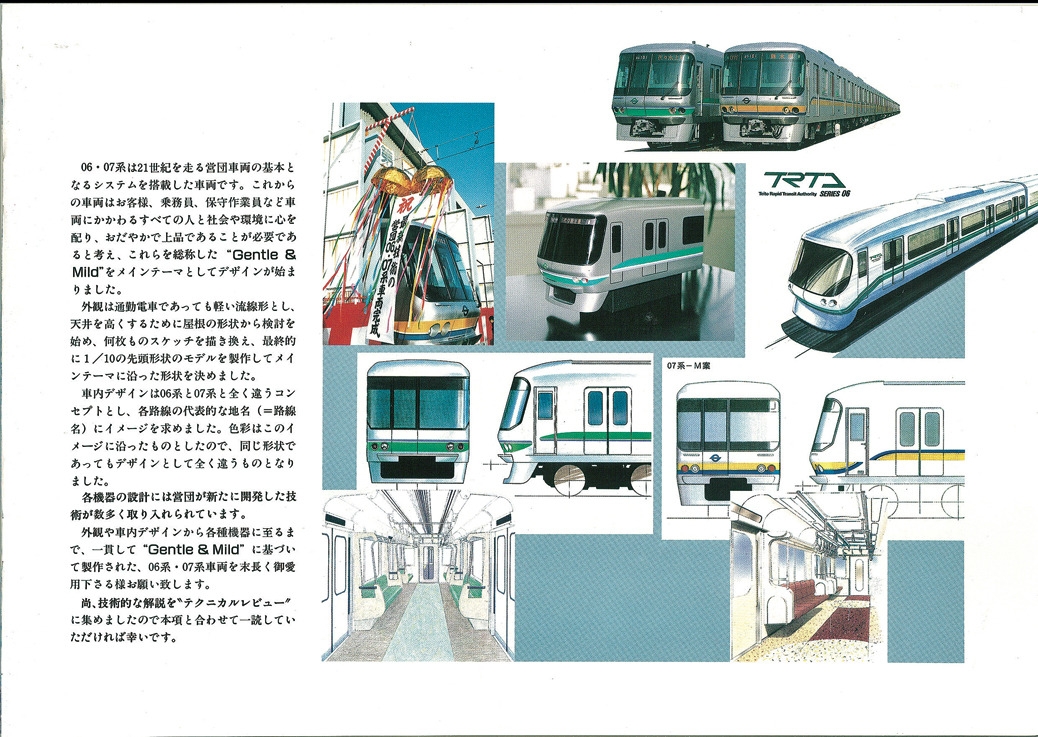
In these sketches instead the general appearance is almost definitive - only the livery is different.
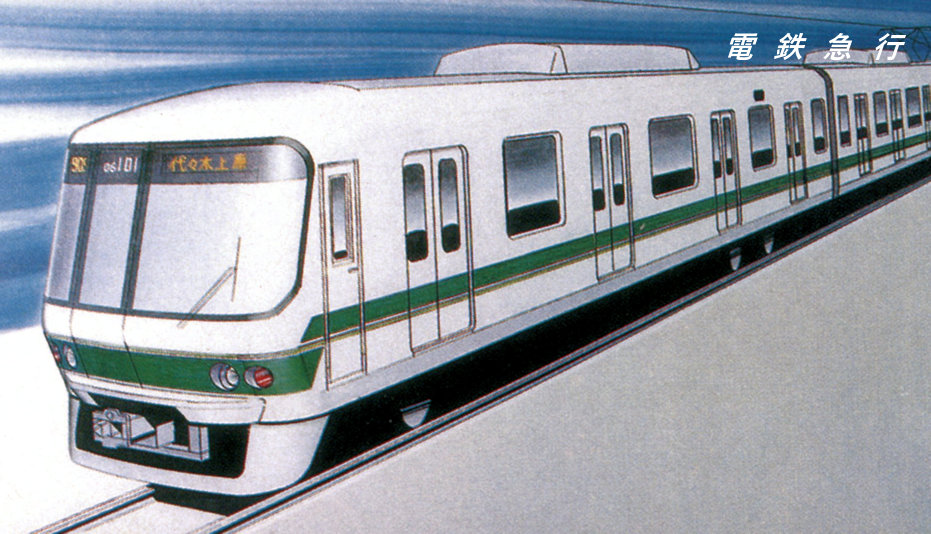

Happy new year everyone from Foggy Northern Italy!!!
*wich in turn was based on the one of 101 Series trains of 1959, wich in turn was based on various post-war JNR EMU designs, wich in turn were based on pre-war ones... I mean, you get the picture!
The sole 06 Series instead lived a tranquil and uneventful life. Plans to manufacture newer sets had always been postponed at a later date since the 6000 Series was still modern and up-to-date, if not in equipment atleast in performance. However, by the mid-2010s, when Tokyo Metro started considering a replacement for the now 40-year old 6000 Series, continuing production of the 06 Series was out of question, as it's design, altough very modern and up to date, was now inevitably 20 years old, and thus resuming production made no sense. The replacement for the 6000 Series came in 2010 in the form of the 16000 Series, and in an effort to standardize the Chiyoda Line's fleet, became the 06 Series' replacement as well. The lone 06 Series set was retired from service in January 2015, when enough 16000 Series became avaible. What could've been a worthy replacement for the 6000 Series was instead outlived by it's predecessors by three years, as the final 6000 Series trains was retired in 2018.
After being removed from service, Tokyo Metro decided not to transfer it to the Tozai Line (where the six similar 07 Series were in service) and instead had it towed to Shin-Kiba depot in 2015 and scrapped there, with nothing of the set being preserved.
Currently, out of the two series, only the six 07 Series sets are in service, all on the Tozai Line. In another bizarre turn of events, all trains survived the installations of platform screen doors on the Tozai Line depsite their non-standard door spacing (wich had been the main reason for removal from the Yurakucho Line), as the Tozai Line had to be fitted with special "wide" gates to adapt to the 2m-wide "wide door trains" of the 05 and 15000 Series, and thus the 07 Series' doors no longer interfered!
Trivia #1:
The interiors of the 06 Series had a flooring pattern inspired by traditional Japanese rock gardens and the places of Nippori, Chiyoda, Asakasa and Jingu-Mae, wich the Chiyoda Line passed through, and was intended to convey a "calm and tranquil atmosphere", while the 07 Series had interiors designed to convery a "lively and elegant atmosphere", with their seat upholstery being inspired by Cezanne's impressionist paintings.
Trivia #2:
Depsite the ground breaking technologies and the cutting-edge design used on these trains, their control desks stuck out like a sore thumb: on the modern brown-colored frame (of the same type as used on the Namboku Line 9000 Series) the main controls consisted of a "vertical axis" brake and master controller lever, with this latter one being nearly identical to the ones used since the 1960s on JNR rolling stock!
This wasn't casual - as it was commonplace in the 1980s and 1990s, the control arrangment of these new trains was designed to be as similar as possible to earlier rolling stock on the same line, to facilitate the drivers of the different companies that had to drive these, to acquaint themselves with the new trains. As such, for example on the Chiyoda Line, you could have trains from a time range of around 30 years (the 6000 Series of 1971, JR East's 203 Series of 1982 and the 06 Series of 1992) all using the same driving controls arrangment, wich in turn was based on the one used on 103 Series trains of 1963*.
Trivia #3:
The cost of manufacture of the 06 Series was 1 410 636 000 Yen, while the 07 Series costed between 1 410 992 000 yen (for the first two Kawasaki-built sets) and 1 419 800 000 yen (for the four Nippon-Sharyo built sets) per 10-car set.
Trivia #4:
A TRTA Yurakucho Line 07 Series is fetaured in the 1998 Lupin III TV Special "Tokyo Crisis: Memories of Blaze".
Trivia #5:
Set 07-101 bears the distinction of being the only Tokyo Metro (and by extension of the whole Tokyo Subway, including Toei lines) to have operated in revenue services on three different lines: the Yurakucho Line (1992 to 2007), the Chiyoda Line (September-December 2008) and the Tozai Line (December 2008 to Today).
Trivia #6:
Since the Yurakucho and Tozai Lines are not phisically connected, 07 Series trains to be transferred from one line to the other had to take a slightly circuitous route: first they had to be taken to Ayase station (via a connecting track between the Chiyoda and Yurakucho Lines, located near Kasumigaseki station) and then had to be hauled by a JR Freight locomotive on the Musashino Line to the Tozai Line's Fukugawa Depot.
Trivia #7:
In a strange turn of events for the 06 Series, what could've been a worthy replacement for the 6000 Series was instead outlived by it's predecessors by three years as the last 6000 Seres set was retired in 2018
Meta-Trivia #1:
At "Seven Trivia points", this is the current holder of "most-trivia-ed" pack ever made by me, beating the previous record holder (the JNR DD54 diesel locomotives) by two points.
Bonus Image(s): Some early design sketches and concepts for the 06 and 07 Serieses:

In these sketches instead the general appearance is almost definitive - only the livery is different.


Happy new year everyone from Foggy Northern Italy!!!
*wich in turn was based on the one of 101 Series trains of 1959, wich in turn was based on various post-war JNR EMU designs, wich in turn were based on pre-war ones... I mean, you get the picture!
duskeyduskey
電車
Happy New Year from Snowy Western Japan!
Here are some track reskins I've made.
Seto-Ohashi line tracks:

Download:
JRC - Seto-Ohashi Track 1
JRC - Seto-Ohashi Elavated Track
JP-Seto-Ohashi Ballast 1
Snowy Procedural track:

Download:
JIRC[SNOW] - Procedural Track 1067mm
Here are some track reskins I've made.
Seto-Ohashi line tracks:

Download:
JRC - Seto-Ohashi Track 1
JRC - Seto-Ohashi Elavated Track
JP-Seto-Ohashi Ballast 1
Snowy Procedural track:

Download:
JIRC[SNOW] - Procedural Track 1067mm
duskeyduskey
電車
Some more 223 shots :hehe:




Railshuttle
Member
THe missing kuids of the Hawna line are:
2:59545:100219:1
565830:100222
565830:100175
565830:100206
I think the last last three are some type of textures but have no idea what the first one is.
2:59545:100219:1
565830:100222
565830:100175
565830:100206
I think the last last three are some type of textures but have no idea what the first one is.
duskeyduskey
電車
Trainz 223-0 Series
Last edited:
Happy new year everyone!
2021 was a pretty productive trainz year for me. I was able to "thick out" almost all major packs of my 2021 plans, especially my "objective of the year" - the 211 Series megapack.
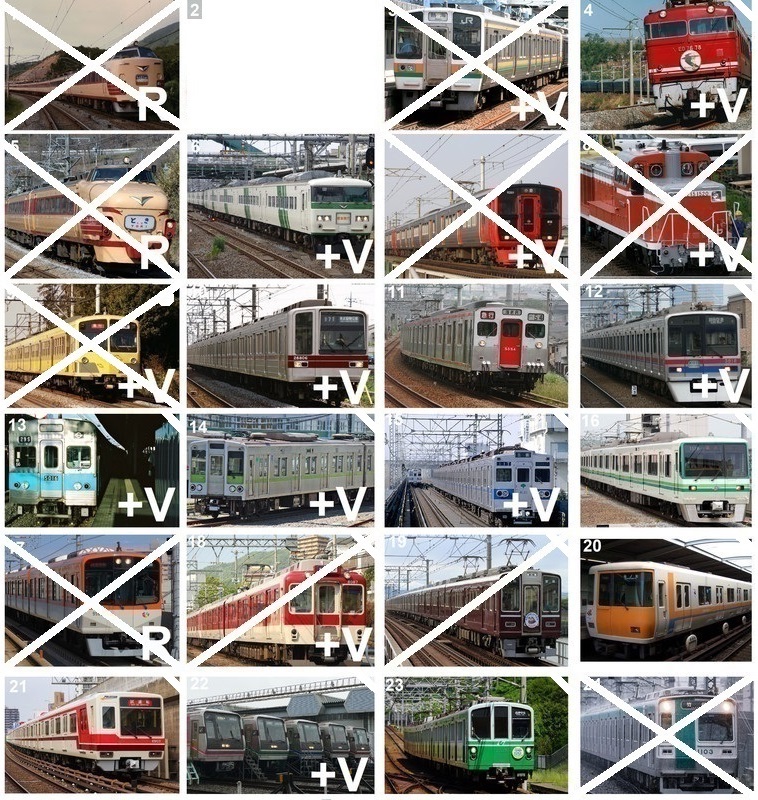
Of course, i had to leave something out (to fit evrything in one year i would've needed to make atleast two of each entry per month, something that in retrospective would've been pretty unpractical, especially considering the various "large packs" listed :hehe , but overall i'm pretty happy how trainz-wise the year turned out - out of 24 entries, i've done 10 of them (of wich three were megapacks!) plus one, no.2 (the "KiHa 58" reskin pack) wich was cancelled.
, but overall i'm pretty happy how trainz-wise the year turned out - out of 24 entries, i've done 10 of them (of wich three were megapacks!) plus one, no.2 (the "KiHa 58" reskin pack) wich was cancelled.
Outside Japanese trains, 2021 was also a good year as well, with the "country count" almost increased four folds, with the addition of the United States, South Korea, Switzerland, Norway, Finland, Hong Kong and Egypt for my website.
Having said that, here are my trainz rolling stock plans for 2022!
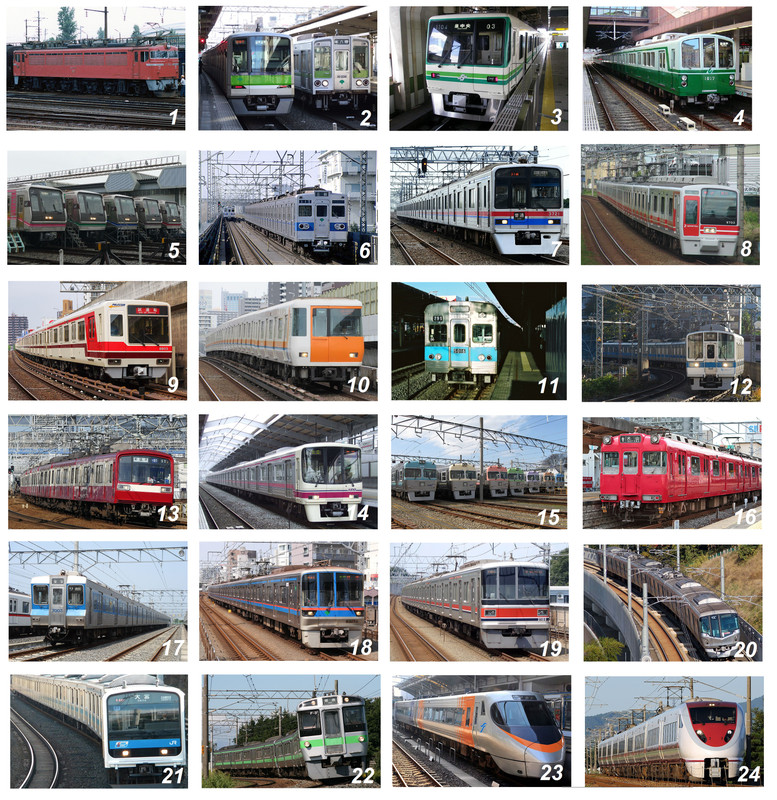
Numbers 1 to 11 are semi or fully carried-over from the old 2021 plans, while numbers 12 to 24 are fully new stuff!
1) JNR Standard Electric Locomotive Pack (ex no.4 of 2021)
2) Toei Shinjuku Line 10-000 Series (ex. no.14 of 2021)
3) Sendai Subway 1000 Series (ex no.16 of 2021)
4) Kobe Subway 1000 Series (ex no.23 of 2021)
5) Osaka Subway New 20 Series pack (ex no.22 of 2021)
6) Toei Mita Line 6000 Series plus third-sector variants (ex no.15 of 2021)
7) Keisei stuff, such as the 3700, 3400, 3000 Serieses or even older trains (ex no.12 of 2021)
8) Sotetsu stuff! This time including even quirkier trains, such as the 8000 and 9000 Serieses
9) Kita-Osaka Kyuko 8000 Series "Polestar" (ex no.21 of 2021)
10) Kintetsu Keihanna Line 7000 and 7020 Serieses (ex no.20 of 2021)
11) TRTA & Tokyo Metro 5000 Series (ex no.13 of 2021)
12) Odakyu stuff. I plan to make a few commuter trains (mainly the iconic 1000/2000 Serieses fetaured in the good old MSTS or the 3000 Series), but i don't rule out making some famous "Romancecars" as well.
13) Keikyu stuff. 1500 and 2000 Series mainly and maybe something else as well.
14) Keio 1372mm-gauge stuff. My favourite Japanese major private railway company, i plan to make a semi-comprehensive pack of Keio's 1372mm-gauge stuff, starting from the 8000 Series and then adding the 7000 and 6000 Serieses (and maybe even something more) as well.
15) Keio 3000 Series. I'm planning to make a full pack of these colorful Inokashira Line trains, including their dozens of third-sector railway variants.
16) Meitetsu stuff. Maybe in an attempt at restarting my old Tsurumi Line, i'm planning to make a few commuter trains from Meitetsu, such as the 100/200 Serieses. I also don't rule out making some of the more famous express trains as well.
17) Hokuso Railway 7000 and 9000 Series. A couple of quirky trains that'll nicely complement my also-planned Keisei/Hokuso stuff.
18) Toei Mita Line 6300 Series. As part of one of my "possible routes" plans, i'll be making the Mita Line's 6300 Series.
19) Tokyu 3000 Series. Similar reason to the Toei 6300 Series. It is also the only remaining Tokyu Railway 20m-long train not to have been made for trainz.
20) Tsukuba Express TX-1000 and TX-2000 Serieses. Suggested by Pagroove last year, these trains will be very interesting to have in trainz.
21) 209 Series (-0 subseries and other narrow-bodied variants and derivatives). The only remaining major Tokyo Area JR commuter train not to have been made for trainz. Full pack that'll also include the E501 Series, the 209-1000 Series and the E231-800 Series (and other trains with the same bodyshell). Maybe this summers' megapack?
22) JR Hokkaido stuff. I'm planning to make the 721 Series first, and maybe something else as well, such as the 785 and even 789 Series limited express trains.
23) More JR Shikoku stuff for TreinspotterJeffreys' Seto-Ooashi Line. The "main dish" will be the JR Shikoku 8000 Series, and maybe i'll also be making the 121/7200 Serieses as well.
24) 681 and 683 Serieses. Also suggested by Pagroove last year, i'll be making a full pack of these iconic limited express trains, of course including the 160Km/h Hokuetsu Express trains as well!
If last year was the "Year of JR Group non-commuter trains", this one is going to be the "Year of Major Private Railways", and boy it's going to be a colorful one!
So, what would you like to see this year?
2021 was a pretty productive trainz year for me. I was able to "thick out" almost all major packs of my 2021 plans, especially my "objective of the year" - the 211 Series megapack.

Of course, i had to leave something out (to fit evrything in one year i would've needed to make atleast two of each entry per month, something that in retrospective would've been pretty unpractical, especially considering the various "large packs" listed :hehe
Outside Japanese trains, 2021 was also a good year as well, with the "country count" almost increased four folds, with the addition of the United States, South Korea, Switzerland, Norway, Finland, Hong Kong and Egypt for my website.
Having said that, here are my trainz rolling stock plans for 2022!

Numbers 1 to 11 are semi or fully carried-over from the old 2021 plans, while numbers 12 to 24 are fully new stuff!
1) JNR Standard Electric Locomotive Pack (ex no.4 of 2021)
2) Toei Shinjuku Line 10-000 Series (ex. no.14 of 2021)
3) Sendai Subway 1000 Series (ex no.16 of 2021)
4) Kobe Subway 1000 Series (ex no.23 of 2021)
5) Osaka Subway New 20 Series pack (ex no.22 of 2021)
6) Toei Mita Line 6000 Series plus third-sector variants (ex no.15 of 2021)
7) Keisei stuff, such as the 3700, 3400, 3000 Serieses or even older trains (ex no.12 of 2021)
8) Sotetsu stuff! This time including even quirkier trains, such as the 8000 and 9000 Serieses
9) Kita-Osaka Kyuko 8000 Series "Polestar" (ex no.21 of 2021)
10) Kintetsu Keihanna Line 7000 and 7020 Serieses (ex no.20 of 2021)
11) TRTA & Tokyo Metro 5000 Series (ex no.13 of 2021)
12) Odakyu stuff. I plan to make a few commuter trains (mainly the iconic 1000/2000 Serieses fetaured in the good old MSTS or the 3000 Series), but i don't rule out making some famous "Romancecars" as well.
13) Keikyu stuff. 1500 and 2000 Series mainly and maybe something else as well.
14) Keio 1372mm-gauge stuff. My favourite Japanese major private railway company, i plan to make a semi-comprehensive pack of Keio's 1372mm-gauge stuff, starting from the 8000 Series and then adding the 7000 and 6000 Serieses (and maybe even something more) as well.
15) Keio 3000 Series. I'm planning to make a full pack of these colorful Inokashira Line trains, including their dozens of third-sector railway variants.
16) Meitetsu stuff. Maybe in an attempt at restarting my old Tsurumi Line, i'm planning to make a few commuter trains from Meitetsu, such as the 100/200 Serieses. I also don't rule out making some of the more famous express trains as well.
17) Hokuso Railway 7000 and 9000 Series. A couple of quirky trains that'll nicely complement my also-planned Keisei/Hokuso stuff.
18) Toei Mita Line 6300 Series. As part of one of my "possible routes" plans, i'll be making the Mita Line's 6300 Series.
19) Tokyu 3000 Series. Similar reason to the Toei 6300 Series. It is also the only remaining Tokyu Railway 20m-long train not to have been made for trainz.
20) Tsukuba Express TX-1000 and TX-2000 Serieses. Suggested by Pagroove last year, these trains will be very interesting to have in trainz.
21) 209 Series (-0 subseries and other narrow-bodied variants and derivatives). The only remaining major Tokyo Area JR commuter train not to have been made for trainz. Full pack that'll also include the E501 Series, the 209-1000 Series and the E231-800 Series (and other trains with the same bodyshell). Maybe this summers' megapack?
22) JR Hokkaido stuff. I'm planning to make the 721 Series first, and maybe something else as well, such as the 785 and even 789 Series limited express trains.
23) More JR Shikoku stuff for TreinspotterJeffreys' Seto-Ooashi Line. The "main dish" will be the JR Shikoku 8000 Series, and maybe i'll also be making the 121/7200 Serieses as well.
24) 681 and 683 Serieses. Also suggested by Pagroove last year, i'll be making a full pack of these iconic limited express trains, of course including the 160Km/h Hokuetsu Express trains as well!
If last year was the "Year of JR Group non-commuter trains", this one is going to be the "Year of Major Private Railways", and boy it's going to be a colorful one!
So, what would you like to see this year?
Happy new year everyone!
So, what would you like to see this year?
Well I am already very happy with the enormous Japanese Trains collection in Trainz and if you manage to do your list then I would be orbiting the moon with happiness :hehe:.
> Only thing I would add to request list is The Perfume livery of the Fukuoka subway as I am a Perfume fan
> Shinkansen E1 (should be doable for you now/ old new livery (the Grey on E1 Max)
On the Odayku from. the GSE70000 /60000
> Tobu Railway Tobu 100 series Spacia trains.
----
Following trains only if you have spare time
Shinkansen 400 someday we'll have JR East Shinkansen complete.
>300 series remake JR West because we have now a LN (long nose) version of it?
>200 series round nose still on the wishlist but that maybe difficult
>>
One other thing. I tried to run the E3's with AI but the AI isn't behaving as it should with these trains. For example if I order it to stop at one of the Hirochi stations it stops with one car completely outside the platform. ( I have to add that that was after I changed the engine spec). But the reason I changed the spec is that because of the trains otherwise won't accelerate as quickly with the ai because the AI applies full power I think in quick drive mode.
So I thought changing the engine spec would help but then I get the above mentioned problem.
Any suggestions and or could you make a special Quickdrive AI friendly pack out of your E3 pack. I would want to run them but now I really can't except when I drive it myself.
>>
Last edited:
Railshuttle
Member
Happy New Year to yo AlexMaria!! I would like to see more love for the Kyushu Tourist trains. MAinly the Sonic Wonderland Express. Number13 of your new years projects looks promising. Especially now that there is a blue and yellow version and I'm hoping you get to do number 14 as well. Good luck to you on your future projects!!
Happy new year all. As I was not so energetic last days here are my Trainz New Year Resolutions:
I really hope this year I can bring a real V2.0. Release full of the Icarus Shinkansen: The list of work to do to reach this stage is as follows
Per City and line: (as this is a fantasy route the names are fantasy lines and cities)
City: Icaruko
Icarus Main line (ICM)
- Make the Whole ICM (Icarus Main Line AI ready) (in progress)
Work needed: Naming of all stations and give each station a station number so that session makers can navigate the menu easily
- Add scenery along the ICM Main line
Sections to finish:
- Central Icaruko along the Shinkansen Line (work in progress and fairly progressing at the desired phase)
- South Icaruko both main line and Icaruko Mega flight yard (Partly started)
Icaruko Metro Line 1
This long North South line has now progressed through a tunnel under Icaruko Mountains to the Airport Side. There I made a station (yet unnamed) that will serve both the North side of the Airport via through running on the ICM and branch of to the South Side where there isn’t any Rail Terminal yet
Then finishing the city and other lines:
———————————————————————
City: Kitabiko
Finishing secondary lines in a passable sketch only (but drivable) detail. My ’sketch only’ detail level should have at least caternary, speed limits and signals.
Making the tram line in Kitakitabiko AI drivable by adding stations names
——————————————————————————
City Kitabiko Minami
Making it more detailed as well as making all the secondary lines North of the City.
————————————————————————————
City: Hanyo City
Finishing Hanyo Metro Line 1
This is almost done: All stations have stations numbers now. Last week I managed to get the AI run a full schedule.
Only thing left is finishing the little branches and figure out if I let those trains through run the Whole line or let them change direction at Den en Hanyo.
———————
- Finishing all the lines in Miami Hanyo
- Finishing the Hanyo Airport
- Finishing Hanyo Airport Line
Adding Hanyo Metro Line 2 which could be probably a Circle or U formed line
Adding freight yards and network
————————————
City: Oga City
- Finishing stations, adding detail to the city center, finishing
- Finishing cities, lines and stations on the East side of the city.
So lots of work still left before I call it a real V2.0. Release. But I try to work again in Monthly or Bi-Monthly snapshots. I also have some secondary projects planned but I will see as I go along.
I really hope this year I can bring a real V2.0. Release full of the Icarus Shinkansen: The list of work to do to reach this stage is as follows
Per City and line: (as this is a fantasy route the names are fantasy lines and cities)
City: Icaruko
Icarus Main line (ICM)
- Make the Whole ICM (Icarus Main Line AI ready) (in progress)
Work needed: Naming of all stations and give each station a station number so that session makers can navigate the menu easily
- Add scenery along the ICM Main line
Sections to finish:
- Central Icaruko along the Shinkansen Line (work in progress and fairly progressing at the desired phase)
- South Icaruko both main line and Icaruko Mega flight yard (Partly started)
Icaruko Metro Line 1
This long North South line has now progressed through a tunnel under Icaruko Mountains to the Airport Side. There I made a station (yet unnamed) that will serve both the North side of the Airport via through running on the ICM and branch of to the South Side where there isn’t any Rail Terminal yet
Then finishing the city and other lines:
———————————————————————
City: Kitabiko
Finishing secondary lines in a passable sketch only (but drivable) detail. My ’sketch only’ detail level should have at least caternary, speed limits and signals.
Making the tram line in Kitakitabiko AI drivable by adding stations names
——————————————————————————
City Kitabiko Minami
Making it more detailed as well as making all the secondary lines North of the City.
————————————————————————————
City: Hanyo City
Finishing Hanyo Metro Line 1
This is almost done: All stations have stations numbers now. Last week I managed to get the AI run a full schedule.
Only thing left is finishing the little branches and figure out if I let those trains through run the Whole line or let them change direction at Den en Hanyo.
———————
- Finishing all the lines in Miami Hanyo
- Finishing the Hanyo Airport
- Finishing Hanyo Airport Line
Adding Hanyo Metro Line 2 which could be probably a Circle or U formed line
Adding freight yards and network
————————————
City: Oga City
- Finishing stations, adding detail to the city center, finishing
- Finishing cities, lines and stations on the East side of the city.
So lots of work still left before I call it a real V2.0. Release. But I try to work again in Monthly or Bi-Monthly snapshots. I also have some secondary projects planned but I will see as I go along.
Last edited:
duskeyduskey
電車
Happy new year everyone! So, what would you like to see this year?
Here are some trains I would like.
1. Tobu 8000
2. JR 215
3. JR 255
4. JR E231-800
5. JR 313
6. Keio 1000
tikkamassala
Shark-nosed Fanatic
Happy new year everyone!
So, what would you like to see this year?
Honestly, with how much you have planned I'm not sure if there even is something left to request. All I could do is second pagroove on seeing a 400 series Shinkansen, especially since we've just seen its successor become reality.
And I'm not sure how useful it'd be, but as a former MSTS player, it'd be interesting to see some of the early Odakyu romance cars as well, mainly the 3100 and the 7000 LSE series.
Railshuttle
Member
After finally figuring out how the screenshot system works on T19P. I've did a little photo shoot of the Japanese layout I recently bought. IT"S FREAKING AWESOME!! next I'll photo the Chyuda line layout I bought too. Enjoy.

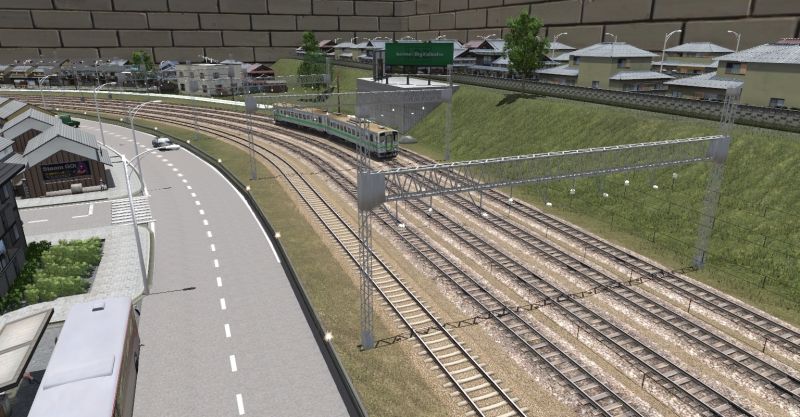

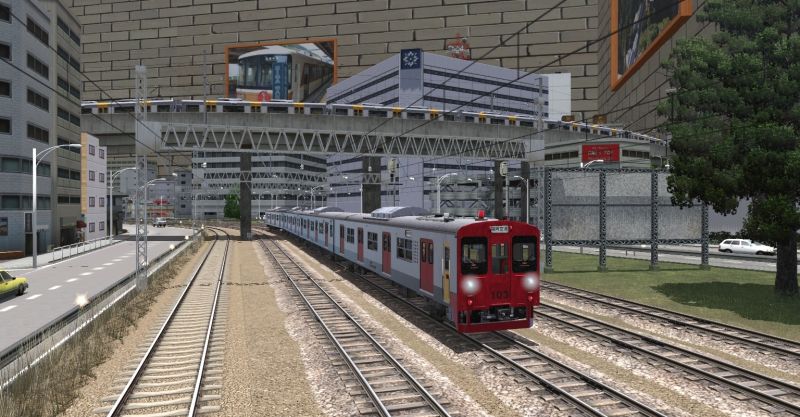
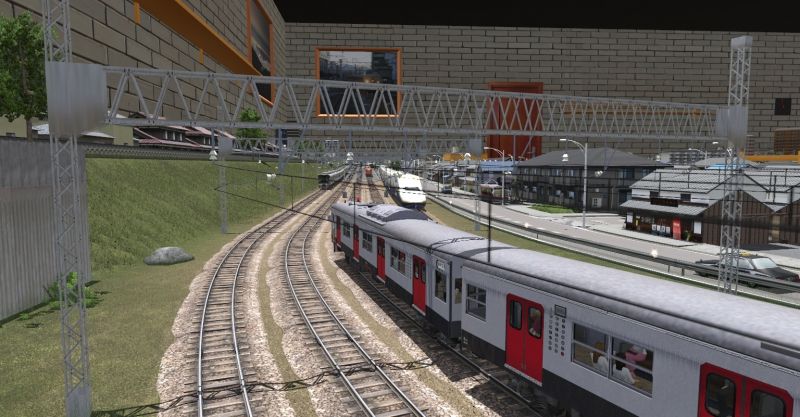
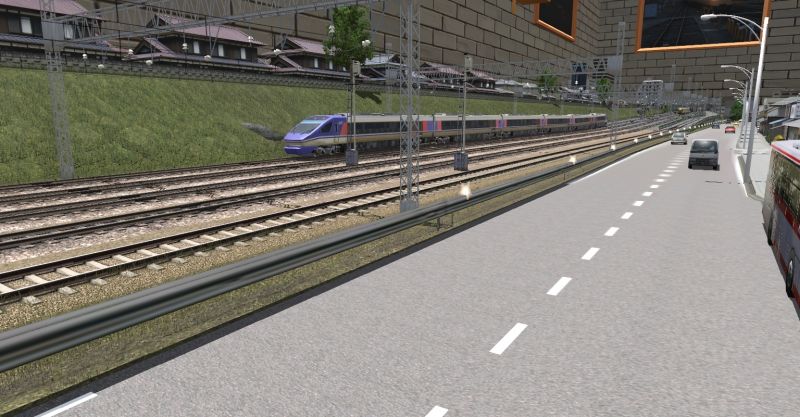

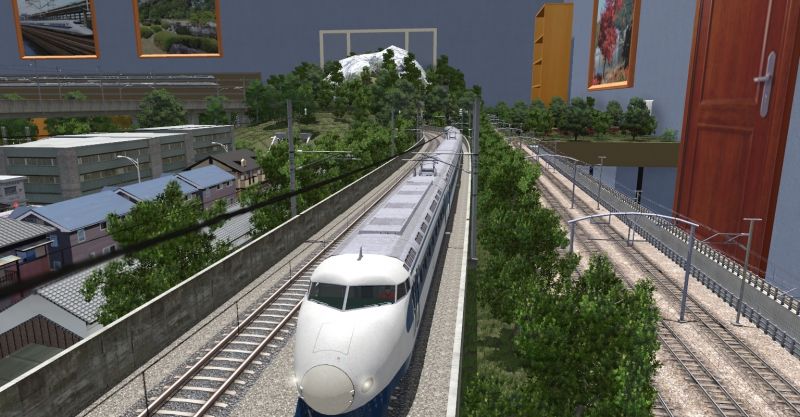
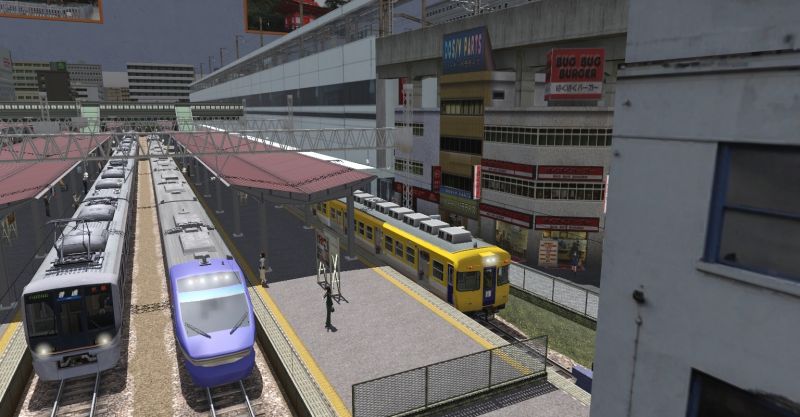
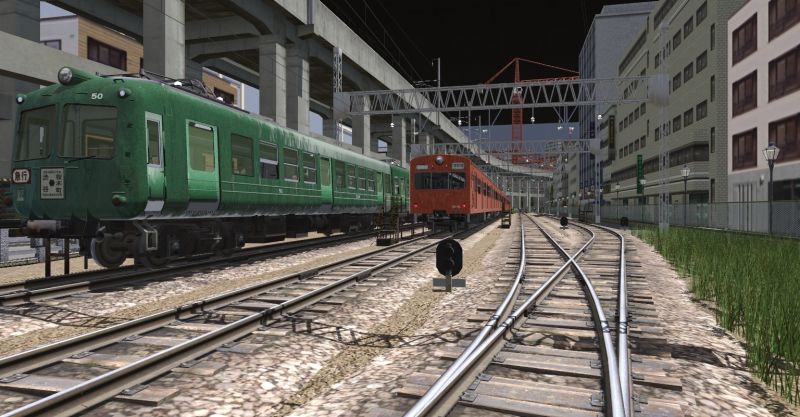










Similar threads
- Replies
- 16
- Views
- 887
- Replies
- 3
- Views
- 476
- Replies
- 6
- Views
- 558
- Replies
- 22
- Views
- 951
